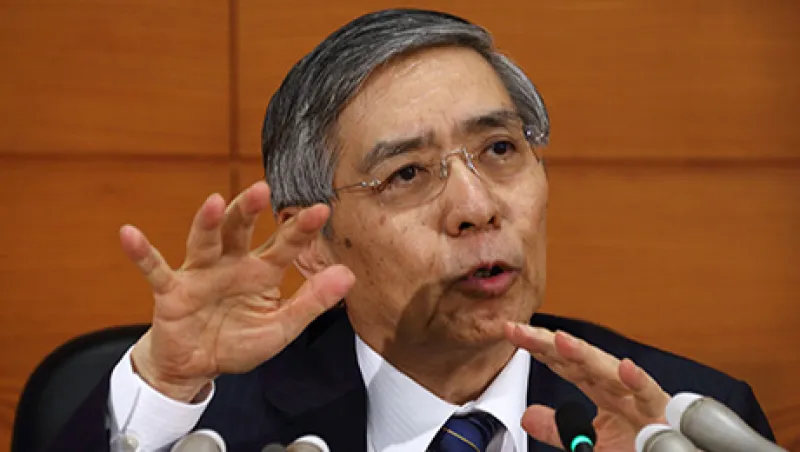The Bank of Japan’s announcements today leave investorsto ponder how far the BoJ — and for that matter, other major central banks — is willing to go? According to some analysts, BoJ governor Haruhiko Kuroda should be taken at his word that he and his colleagues will do whatever it takes to kick-start the Japanese economy. “The market still does not seem to have grasped the significance of this phase of currency wars,” Société Générale strategist Albert Edwards mused in a note for clients released this morning. “It reminds me of 2006–’07, when falling U.S. house prices and then widening corporate bond spreads were totally ignored by upbeat equity investors until it was too late.”
Japan reports output boost, price decline on corporate goods. Economic data releases bolstered arguments in favor of Abenomics. September industrial production rose by 2.9 percent for the month, following a 2.7 percent jump in August. Machinery orders also reported an uptick, rising by 2.9 percent versus consensus forecasts for a contraction. October corporate goods price index levels registered a deeper contraction than anticipated, however, underscoring the enormous undertaking facing policymakers at the Bank of Japan.
China output misses forecasts but still on an upswing. Data from the National Bureau of Statistics of China released today reported a 0.5 increase in industrial output in October for a gain of 7.7 percent year-over-year, yet lower than consensus forecasts. Retail sales data for the month expanded by 11.5 percent, compared to October 2013. Closely watched urban fixed investment levels came in at 15.9 percent year-over-year, in line with forecasts but continuing to signal a cooling in property development reflected in lower cement and steel output in today’s production report.
Deflation fears persist in the euro zone. October consumer price index data for Germany registered a month-over-month contraction of 0.3 percent, but 0.8 percent higher compared to October 2013. CPI remained flat in France and edged up 0.1 percent in Italy on both a month-over-month and year-over-year basis. This latest crop of sluggish price data will likely lead to new cries for action during the European Central Bank’s next meeting.
Wal-Mart beats analysts’ forecasts. Wal-Mart Stores reported quarterly results this morning with revenues slightly beating consensus forecasts. Multiple media channels yesterday reported on an embarrassing internal memo at the largest U.S. retailer that detailed significant problems in the produce and grocery segments.
Portfolio Perspective: No Safe Haven — Atul Lele, Deltec International Group
Over the coming quarter the global economic recovery remains disparate, yet intact. The second derivative, however, the momentum of growth, remains weak and liquidity expansion will slow.
In the U.S., industrial production growth and short-term market interest rates have reached a point at which they could curtail the economic recovery. In Europe, monetary policy is the potential game changer and in China, the sharply declining property market leaves the country’s transitioning economy on the cusp. In Japan, growth may be on an upward trajectory, however further policy action is necessary to assist the recovery.
Over the next six to 12 months, the greatest risk posed to markets will be how expensive safe assets react to changes in monetary policy, and how this interest rate volatility will affect other markets. This is most challenging period for fixed income in 20 years. Those challenges are spilling over into other asset classes. Against this backdrop, tactical opportunities remain, however. At first, cash and other liquid holdings will offer the most attractive returns but ultimately, equities will present more attractive risk-adjusted returns than fixed income.
Atul Lele is the chief investment officer of Nassau, Bahamas–based Deltec International Group.






